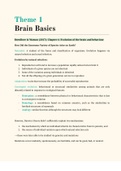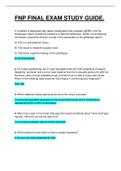Summary
3.6C The Brain: Summary (Themes 1-4)
- Course
- Institution
Fully summarises the book chapters for the Psychology Brain and Cognition specialisation course 3.6C The Brain. This summary contains the updated literature list for in the suggested reading order.
[Show more]






